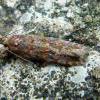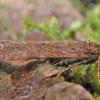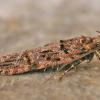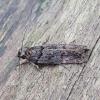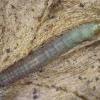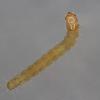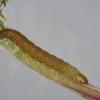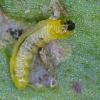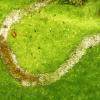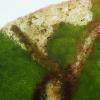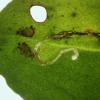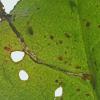35.146 Teleiopsis diffinis (Haworth, 1828)
Status and Distribution
Widespread and common to locally common in England, Wales and the Channel Islands; widespread but local over much of the Scottish mainland, although apparently absent from the far north and much of the west; rare in the Scottish Islands having only been noted on Orkney. Very local in Ireland with the few records mainly from the west and Northern Ireland.
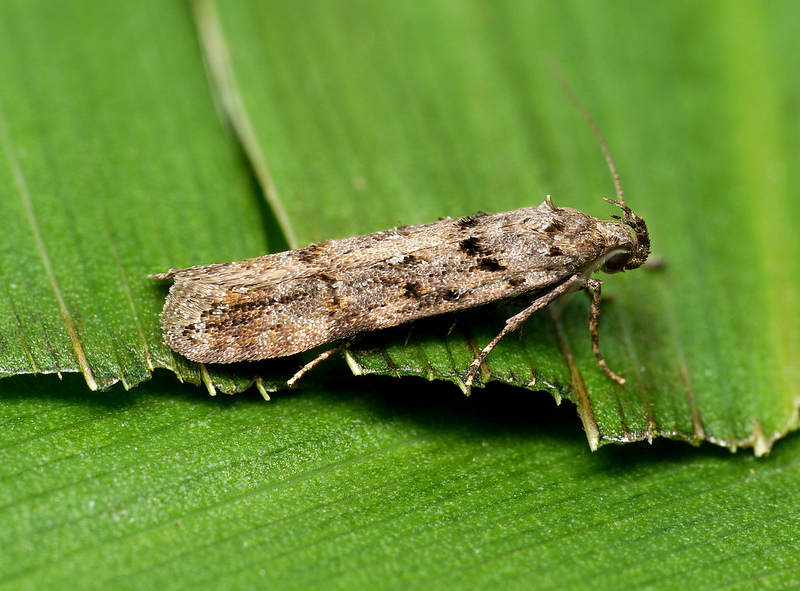
Provisional map
Foodplant and Larval Feeding Signs
Chrysomelid beetle (Mantura sp) mine for comparison.
Rumex acetosella (sheep's sorrel), see plant distribution map, and Rumex acetosa (common sorrel).
In Europe also recorded from Rumex crispus (curled dock) and R. tingitanus.
A range of feeding methods are employed. See 'Finding' section for more details.
Habitat
In many acidic habitats such as grassland and heaths; also found in coastal shingle where the foodplant occurs.
Finding the Moth
Larva: feeds in two generations (August to April and again during July and August). In the autumn, and after overwintering in a hibernaculum, feeds on the basal leaves of both Rumex species, either folding the leaf edge into a slight tube or, sometimes, windowing the leaf from below. On Rumex acetosa in the autumn, has been found in a long, linear, often sinuous mine, with sometimes more than one mine on a leaf. Also reported in a silken gallery spun on the upper part of the roots, or along the stem, or among the seeds. See also note on a beetle larva in the 'Similar Species' section below. For reference details, see 'Publications - Published Papers - Teleiopsis diffinis - Heckford and Beavan, 2019'. It seems that feeding habits of the summer larvae have not been observed.
Adult: most frequently encountered at light, sometimes in good numbers, flies late in the evening, can be swept or smoked from amongst the foodplant during the day. Has been noted flying over heather and amongst Teucrium scorodonia (wood sage).
Similar Species
Larva - a Chrysomelid Beetle larva in the genus Mantura makes a similar mine on Rumex acetosa. This larva has a black head (yellowish brown in T. diffinis) and is sluggish (T. diffinis moves quickly if disturbed in the mine).
A moderately large and quite variable Gelechiid (13 to 17mm) with slightly pointed wing tips to the forewings - the sometimes similar Chionodes distinctella has more rounded wing tips. The overall lightness or darkness of the forewing is dictated by the ammount of blackish, fuscous, ochreous or whitish scales present. In all but the darkest or worn specimens, the distinctive nature of the outwardly oblique fascia of raised black scales at one-quarter is definitive. Even in pale specimens there is usually a hint of these darker scales and sometimes one or two thin lines or streaks of darker scales, occasionally starting from about one third, but more usually from beyond half way to the termen. The females have more pointed tips to the hindwing than the males.
Double brooded; the moth having been found from the beginning of May to the end of September with a few later and earlier records. The peak flight periods are from late May to early July for the first brood and late July to late September for the second.
Earliest: 17th March 1977 (VC16). This record is mentioned in The Moths and Butterflies of Great Britain and Ireland Vol. 4 (2) to suggest that the moth may occasionally over-winter as an adult. The next earliest is 22nd April 2010 (VC68).
Latest: 10th November 2002 (VC25)







